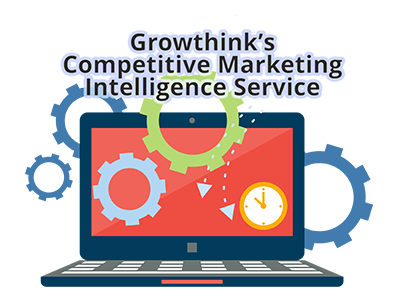To be effective, your marketing efforts depend on targeting the specific customers (and potential customers) who will produce the best results for your business.
No company, no matter how big their budget, can afford to spend precious marketing dollars on too wide of a group of people. You just can’t be everything to everyone.
You can create fast and cost-effective growth however by identifying your core customers and focusing your marketing activities on them – attracting them, selling to them, and providing the right customer support and retention.
This doesn’t necessarily mean to focus on customers who buy the most, though that is the most important criteria in a top customer. There are also the “Influencers” who are the most vocal or respected, and spread the word about you to others – very valuable, even if they don’t buy more than other customers.
Who are Your Top Customers?
It’s easy enough to tell which customers of yours buy the most. Look at sales receipts or customer information to see who has made the most purchases, or the largest dollar amounts.
Sort out the 20% of customers who have bought the most from you over time, and that’s your target group to which you want to focus your marketing (mainly to find more potential customers like them).
Then gather whatever other information you have about these customers and see what they have in common. While every customer is different, you’ll notice there are certain trends and common characteristics among your target customers.
The easiest and primary information to get about these customers is their demographics – the directly observable characteristics that describe them (as opposed to psychological characteristics such as preferences, needs, motivations, self image, etc.).
Find out their basic demographic information
This includes basic facts:
- Age
- Race
- Gender
- City/Zip Code
And also some less apparent information:
- Income
- Occupation
- Marital status
- Children
And if you serve business to business customers, demographic information will include information such as:
- Size of their business (in revenues and/or personnel)
- Title/function
- Purchasing/decision-making authority
How to turn your customer knowledge into gold
Time for a little alchemy…suppose you’re going through your list of top customers and find that the majority are married women in their thirties who live within 5 miles of your store.
What can you do with these four demographic facts? To me, this information could be used in the following ways:
1. Running ads on Facebook that only appear for women, age 30-39, within your city or town. By knowing this information you won’t have to pay for clicks and traffic from people who are less likely to buy.
2. Using signs, flyers, or some other kind of print advertising just within the 5-mile radius of your store. This would further saturate your business area and make your potential customers more likely to buy (as it takes 7 contacts with your company or ads on average to get a response).
3. Running an offer that specifically appeals to younger married women; for example, an offer to bring in one’s husband and receive a discount, if this is applicable to what you do.
4. Selecting photos for your ads of people who closely match your target customers. In this case, you’d show women in their thirties who look like they live in your city, however that can be represented. Or pictures of happy couples, if appropriate.
5. Using direct mail to target potential customers. Chances are the 5-mile radius around your store is all in 1-2 zip codes. This information is very helpful if you’re doing a direct mail promotion. When you buy a mailing list through a service like MelissaData or Listsource, you can select only addresses of women within your zip code. Why spend $.50-$1.00 or more per person if they’re not as likely to respond, purchase, or love you?
6. Finding out where these women congregate and then going there or sponsoring and event. For example, if you determine that most of your target customers belong to the local PTA (Parent Teacher Association), sponsor a PTA meeting or event. As a related note, this is why I love airport lounges. Yes, it’s nice to stay in a comfortable environment when waiting for a plane, but I love the marketing implications. That is, virtually all of the people I see in these lounges are corporate executives and salespeople that travel a lot. If your business’ core customers fit this demographic, then hanging out in these lounges could be a goldmine.
7. Designing your store’s appearance and layout with these women in mind. Your store would probably be colorful, aesthetically pleasing, and perhaps “hipper” and less formal than if most of your visitors were Baby Boomers.
8. Conducting research to learn what has been discovered about these women’s preferences. Did you know there have been tests showing that women prefer ovals over squares, or purple over red? This information would be very useful when creating a logo, designing your store’s outside and inside, and all of your promotional materials.
See all the ways you could utilize this information? This is why big companies spend a LOT on market research and surveys, and ask this information of customers when they buy online, etc. The more you know about them, the better marketing decisions you can make.
But what if I don’t have this information about your customers?
Start with what you know
If you’re interacting with customers face-to-face, you know their gender and can guess their ages. Your sales receipts will probably tell you customer addresses, so there’s the city and zip code.
If you have collected business cards or know your top customers’ demographics from memory, write that up as a working profile for now until you can do it more formally.
Then, start collecting their information
The best way to do this is to ask for it! Have a jar on your counter for business cards and a drawing/raffle. Or hand them a short survey form to fill out with 5-8 questions.
Or you can make simple online surveys using SurveyMonkey, SurveyGizmo, or Zoomerang, and then promote the web address where people can fill it out. It helps if you offer them some incentive, like a free gift or chance to win something.
It seems like fast food restaurants are getting pretty systematic now about encouraging customers to rate their experience online or by calling into a hotline.
And last time I went to a new doctor, they had me fill out a “Patient Information Sheet” asking for quite a bit about me medically, as well as about my demographics. See how doctors and dentists collect this so routinely? Make it a part of the way you do things and you won’t have to remember.
Have you ever registered for something online and they ask for your company name, company type, your job title within the company, and so on? That’s a great example of collecting demographics about a business, for B-to-B sales.
Make a demographic profile
Take your findings and summarize them on one page, for easy reference.
I know several copywriters who have told me that the best way to “get through” to people reading their sales letter or persuasive copy is to sit down to write with a photo of their “ideal” or “typical” person from their target market, and write as if speaking directly to that person.
Photo or not, at least write what you know about your top customers’ common characteristics and print it out on a sheet of paper.
Make this profile a quick snapshot to reference that will represent them, rather than going about your marketing haphazardly, or in a less focused manner.
Lastly, do some research
As I said, you should also look for studies and reports online about how people of certain ages, genders, or marital statuses behave differently (from a marketer’s perspective).
Lastly, in order to prevent false assumptions, if your main customers fit a certain demographic, for example they are mostly of a lower income, ask yourself if this was intentional, or if your previous marketing efforts just happened to attract them.
Executing on the ideas above will shed light on exactly whom you’re working hard to serve, and will aid you in your efforts to find more of them and treat them the way they want to be treated.
Otherwise, it’s “Round peg…meet Square Hole.”
Here’s to focused, targeted marketing…good luck!
Do You Know Everything You Need to Know About Your Competitors & Customers?
How much do you know about your customers and competitors?
Do you know the demographic profiles of your target customers and the best ways to reach them?
Do you know who your competitors are targeting?
If not, you can’t create nor execute on an effective marketing plan.

Let us conduct this research for you..
We have expertise and access to proprietary databases that others don’t…


